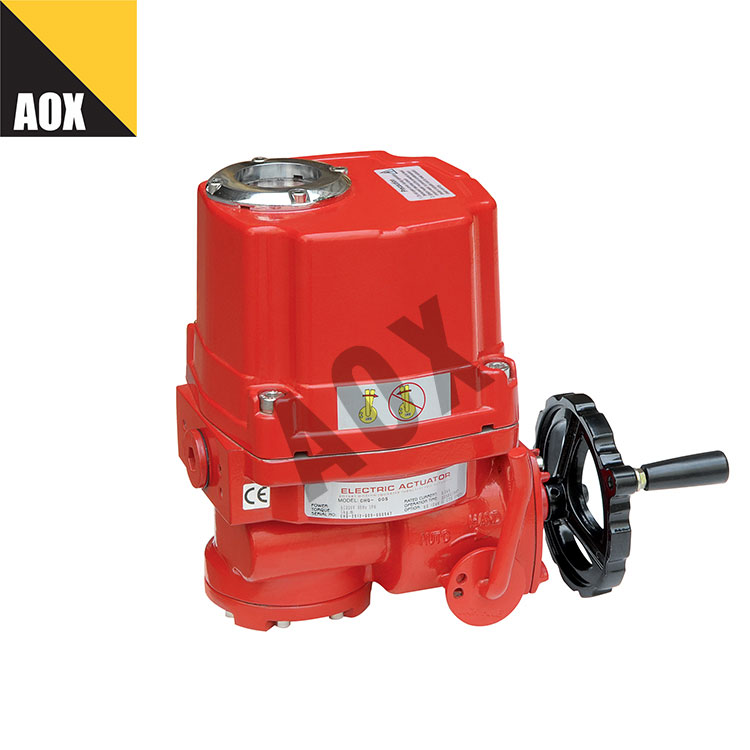Rotary Electric Actuators: Revolutionizing Precision and Automation
2025-01-23
In the world of automation and motion control, the rotary electric actuator has become a game-changer. These devices are essential in industries requiring precision, efficiency, and reliability. From robotics and manufacturing to energy and aerospace, rotary electric actuators are at the heart of countless modern innovations.
This blog explores what rotary electric actuators are, how they work, their benefits, and their wide-ranging applications.
What is a Rotary Electric Actuator?
A rotary electric actuator is a device that converts electrical energy into rotary motion. It is designed to provide precise control over rotational movement, typically used to open, close, or position components such as valves, dampers, or robotic arms.
These actuators are known for their accuracy and ability to integrate seamlessly with control systems, making them a cornerstone of modern automation.
How Do Rotary Electric Actuators Work?
1. Input Signal
- The actuator receives an electrical signal from a control system, such as a programmable logic controller (PLC).
2. Conversion of Energy
- The internal motor (often a stepper or servo motor) converts electrical energy into mechanical motion.
3. Rotational Movement
- The actuator generates a precise rotary motion, often modulated by gears or torque amplification systems.
4. Feedback and Control
- Many rotary actuators incorporate sensors to provide feedback, ensuring accurate positioning and operation.
Key Features of Rotary Electric Actuators
1. Precision
- Capable of fine-tuned rotational control for tasks requiring high accuracy.
2. Torque and Speed Control
- Adjustable to meet the specific requirements of various applications.
3. Compact Design
- Offers powerful performance in a small, space-saving form factor.
4. Feedback Mechanisms
- Integrated sensors, such as encoders, provide real-time position and performance data.
5. Ease of Integration
- Compatible with various communication protocols like Modbus, CANbus, and Ethernet.
Advantages of Rotary Electric Actuators
1. Energy Efficiency
- Converts electrical energy directly into motion, minimizing energy losses.
2. Low Maintenance
- Fewer mechanical parts compared to pneumatic or hydraulic actuators, reducing wear and tear.
3. High Precision
- Suitable for applications requiring accurate positioning and repeatability.
4. Environmentally Friendly
- Operates without the need for oil or compressed air, making it a cleaner alternative.
5. Quiet Operation
- Produces minimal noise compared to pneumatic or hydraulic systems.
Applications of Rotary Electric Actuators
1. Industrial Automation
- Used in robotic arms, conveyor systems, and assembly lines for precise motion control.
2. HVAC Systems
- Operates dampers and valves to regulate airflow and temperature in heating, ventilation, and air conditioning systems.
3. Oil and Gas
- Controls valves in pipelines and processing plants to ensure efficient and safe operations.
4. Aerospace
- Employed in aircraft systems for precise actuation of control surfaces and mechanisms.
5. Medical Devices
- Powers precision instruments such as surgical robots and diagnostic equipment.
6. Renewable Energy
- Used in wind and solar energy systems for positioning and control mechanisms.
Types of Rotary Electric Actuators
1. Stepper Motor Actuators
- Ideal for applications requiring precise incremental movements.
2. Servo Motor Actuators
- Provide high-speed and high-torque capabilities with advanced feedback systems.
3. Direct Drive Actuators
- Eliminate the need for gears, offering smooth and direct motion.
4. Smart Actuators
- Feature integrated sensors and controllers for advanced automation and monitoring.
How to Choose the Right Rotary Electric Actuator
1. Application Requirements
- Consider torque, speed, and positioning accuracy needed for your task.
2. Environment
- Ensure the actuator can withstand environmental factors like temperature, moisture, or dust.
3. Control System Compatibility
- Check compatibility with your existing control systems and communication protocols.
4. Durability and Maintenance
- Choose an actuator with a robust design and minimal maintenance needs for long-term use.
5. Cost vs. Performance
- Balance your budget with the performance features required for optimal efficiency.
Conclusion
Rotary electric actuators are indispensable in modern automation and precision control applications. Their versatility, reliability, and efficiency make them a preferred choice across industries. Whether you’re building a robotic system, controlling industrial processes, or innovating in renewable energy, rotary electric actuators provide the precision and performance you need to achieve your goals.



